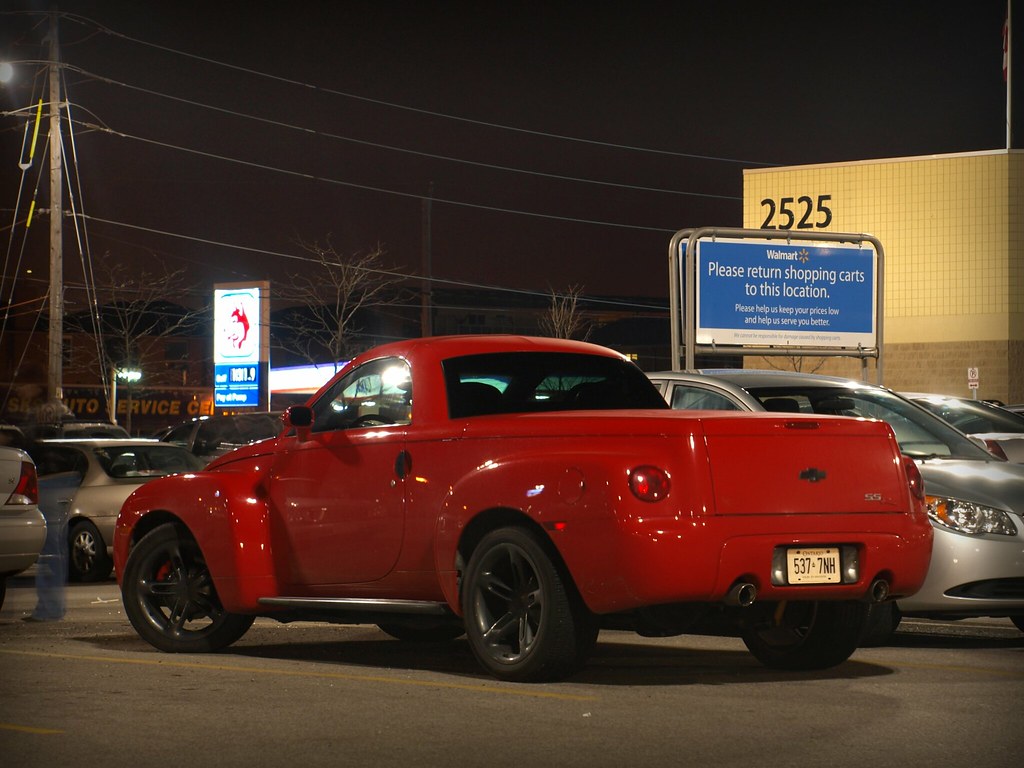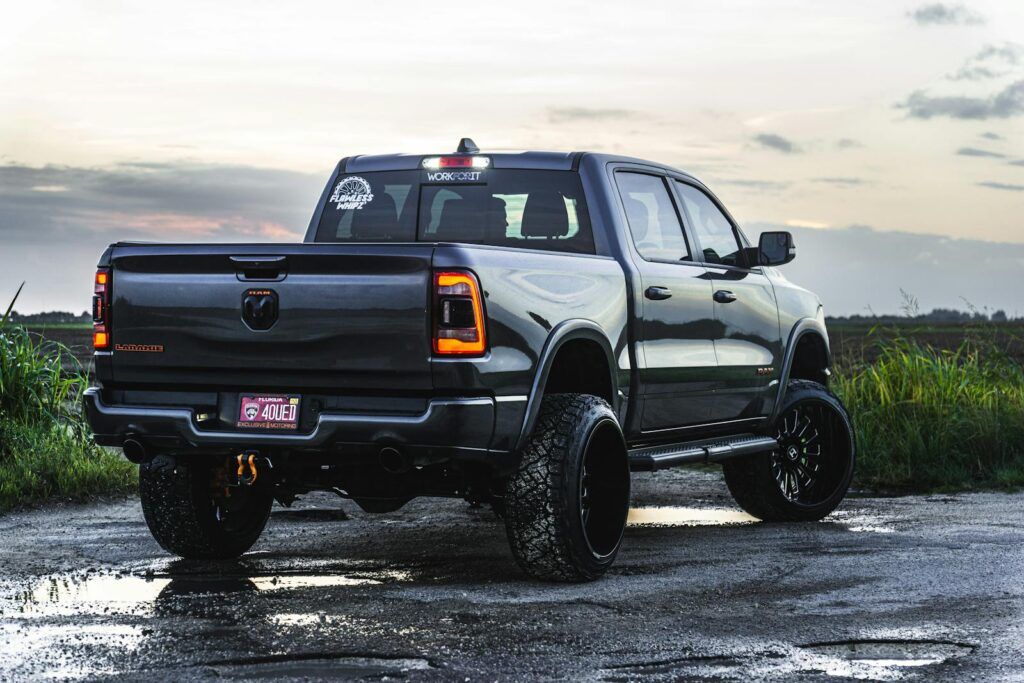
For many Americans, a pickup truck represents freedom, utility, and a reliable workhorse. Whether it’s for daily commutes, weekend adventures, or heavy-duty tasks, these versatile vehicles hold a special place in countless driveways across the nation. However, if you drive a pickup truck, especially a new pickup truck, you soon may be in for a rude awakening when you get your next insurance bill. Insurers adjust their rates based on a multitude of factors, including what they classify as “high-risk” vehicles.
As the landscape of vehicle ownership and insurance continues to evolve, understanding what makes a vehicle fall into this ‘high-risk’ category is more crucial than ever for current and prospective truck owners. Have you ever experienced sticker shock when browsing insurance quotes for a pickup? It turns out that some trucks are consistently flagged as “high risk” by insurers. This designation often leads to steeper premiums, tougher claims processes, and sometimes even fewer insurance options available to the owner.
Knowing which pickups receive a red flag, and more importantly, understanding the underlying reasons, can significantly help consumers make smarter choices. This insight is invaluable whether you are actively buying a new truck, seeking to insure an existing one, or simply want to avoid unwelcome financial surprises. This comprehensive guide will delve into the specific models and inherent characteristics that often land pickup trucks on insurers’ ‘high-risk’ lists, offering a clear perspective on the variables at play.

1. **Ford F-250 & F-250 Super Duty**These heavy-duty trucks from Ford are consistently identified by insurers as high-risk vehicles. The Ford F-250, a formidable and powerful presence on the road, sees a notable percentage of its models involved in accidents, contributing significantly to its classification. The sheer size and power of these vehicles mean they can inflict more damage in collisions, thereby raising the liability risks for insurance providers.
Adding to the challenge, the cost associated with repairing these robust machines is often substantial. Parts can be expensive, and the specialized labor required for their upkeep drives up the overall claim value. Both the Ford F-250 and its ‘Big Brother,’ the F-250 Super Duty, also grapple with alarmingly high theft rates, making them attractive targets for criminals.
For the F-250 Super Duty specifically, its high performance, while a desirable trait for drivers, sometimes encourages riskier driving behavior. This factor, combined with the expensive repairs and high theft rate, solidifies its position as a vehicle that demands higher insurance premiums. Owners choosing these powerful Ford models should be prepared for the financial implications of their robust capabilities and popularity.
Car Model Information: 2016 Ford F-250 XL
Name: Ford F-Series
Caption: 2022 Ford F-150 Lariat Luxury
Manufacturer: Ford Motor Company
Aka: Ford Lobo (Mexico, 1992–present)
Production: 1948–present
Class: Pickup truck#Full-size pickup truck
Layout: Front-engine, rear-wheel-drive layout,rear-wheel drive
Predecessor: 1941 Ford
Categories: All-wheel-drive vehicles, All Wikipedia articles written in American English, All articles that may contain original research, All articles with unsourced statements, Articles that may contain original research from September 2020
Summary: The Ford F-Series is a series of light-duty trucks marketed and manufactured by the Ford Motor Company since model year 1948 as a range of full-sized pickup trucks — positioned between Ford’s Ranger and Super Duty pickup trucks. Alongside the F-150 (introduced in 1975), the F-Series also includes the Super Duty series (introduced in 1999), which includes the heavier-duty F-250 through F-450 pickups, F-450/F-550 chassis cabs, and F-600/F-650/F-750 Class 6–8 commercial trucks.
Get more information about: Ford F-Series
Buying a high-performing used car >>>
Brand: Ford Model: F-250
Price: $21,480 Mileage: 52,834 mi.
Read more about: Hollywood’s High Octane: Tom Cruise’s 15 Vehicles That Define His Adrenaline Obsession
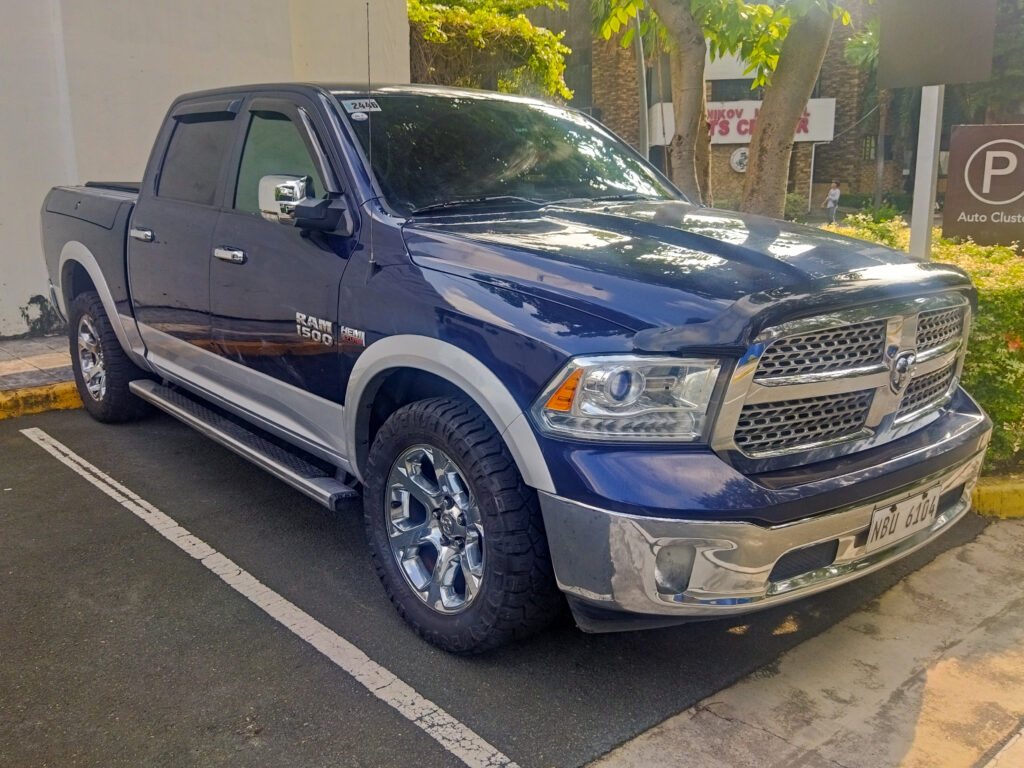
2. **Ram 1500/2500/3500 & TRX Models**The Ram lineup, spanning from the popular 1500 series to the heavy-duty 2500/3500 models and the high-performance TRX, frequently appears on high-risk lists compiled by insurance companies. The Dodge Ram 1500, in particular, is noted for its widespread popularity, which unfortunately makes it a prime target for theft, leading to a high theft rate.
Beyond the theft risk, repair costs for the Ram 1500 are often higher due to the expense of its parts. This directly translates to increased claims for repairs, subsequently driving up insurance rates for owners. For the heavy-duty Ram 2500/3500 models, their classification as high-risk stems from elevated repair costs and a greater potential for significant accident liability.
The Ram 1500 TRX stands out as an especially pricey proposition for insurers. Its unique combination of high performance and costly mechanical components creates a significant ‘high risk on paper.’ This blend means higher potential for both severe accidents and expensive repairs, cementing its status as a vehicle with notably higher insurance premiums.
Car Model Information: 2017 RAM 1500 Rebel
Name: Dodge Ram / Ram pickup
Caption: 2017 Ram 1500 Express
Manufacturer: Dodge
ModelYears: 1981–present
Production: October 1980 – present
Class: Pickup truck#Full-size pickup truck,Pickup truck#Heavy-duty pickup truck
Layout: Front-engine, rear-wheel-drive layout,rear-wheel drive
Predecessor: Dodge D series
Categories: 1990s cars, 2000s cars, 2010s cars, 2020s cars, All-wheel-drive vehicles
Summary: The Ram pickup (marketed as the Dodge Ram until 2010 when Ram Trucks was spun-off from Dodge) is a full-size pickup truck manufactured by Stellantis North America (formerly Chrysler Group LLC and FCA US LLC) and marketed from 2010 onwards under the Ram Trucks brand. The current fifth-generation Ram debuted at the 2018 North American International Auto Show in Detroit, Michigan, in January of that year.
Previously, Ram was part of the Dodge line of light trucks. The Ram name was introduced in October 1980 for model year 1981, when the Dodge D series pickup trucks and B series vans were rebranded, though the company had used a ram’s-head hood ornament on some trucks as early as 1933.
Ram trucks have been named Motor Trend magazine’s Truck of the Year eight times; the second-generation Ram won the award in 1994, the third-generation Ram heavy-duty won the award in 2003, the fourth-generation Ram Heavy Duty won in 2010 and the fourth-generation Ram 1500 won in 2013 and 2014, and the current fifth-generation Ram pickup became the first truck in history to win the award four times, winning in 2019, 2020, 2021 and most recently, 2025.
Get more information about: Ram pickup
Buying a high-performing used car >>>
Brand: Ram Model: 1500
Price: $28,500 Mileage: 58,968 mi.

3. **GMC Sierra 1500 & 2500HD**GMC Sierra models, including both the 1500 and the heavy-duty 2500HD, are popular choices among truck enthusiasts but also present distinct challenges for insurance providers. The GMC Sierra 1500, a very popular truck, unfortunately shares this popularity with thieves, contributing to a high theft rate. This makes it a frequent target, raising the risk profile for insurers.
Furthermore, repairs for the Sierra 1500 tend to be more expensive due to the higher cost of its parts. This directly influences the total cost of claims, which then translates into higher insurance rates for its owners. The large-duty-class GMC Sierra 2500HD, similar to other heavy-duty trucks, is flagged primarily because of its higher repair costs.
Its substantial size and capability also lead to greater accident liability. In the event of a collision, the potential for extensive damage and higher payouts is a significant concern for insurance companies. Therefore, whether opting for the popular 1500 or the robust 2500HD, owners should anticipate elevated insurance considerations for GMC Sierra trucks.
Car Model Information: 2023 Mazda Mazda3 FWD w/Select Package
Name: Chevrolet Silverado/GMC Sierra
Caption: 2022 Silverado 2500HD High Country
Manufacturer: General Motors
Aka: unbulleted list
Production: 1998–present
Assembly: unbulleted list
Class: unbulleted list
BodyStyle: unbulleted list
Layout: unbulleted list
Predecessor: unbulleted list
Categories: 2000s cars, 2010s cars, 2020s cars, All-wheel-drive vehicles, All Wikipedia articles written in American English
Summary: The Chevrolet Silverado is a range of trucks manufactured by General Motors under the Chevrolet brand. Introduced for the 1999 model year, the Silverado is the successor to the long-running Chevrolet C/K model line. Taking its name from the top trim level from the Chevrolet C/K series, the Silverado is offered as a series of full-size pickup trucks, chassis cab trucks, and medium-duty trucks. The fourth generation of the model line was introduced for the 2019 model year.
The Chevrolet Silverado shares mechanical commonality with the identically related GMC Sierra; GMC ended the use of the C/K nomenclature a model generation prior to Chevrolet. In Mexico, high-trim level versions of the Silverado use the Chevrolet Cheyenne name (not to be confused with the 2003 concept). Competing against the Ford F-Series, Ram pickup, Toyota Tundra, and Nissan Titan, the Silverado is among the best-selling vehicles in the United States, having sold over 12 million trucks since its introduction in 1998 as a 1999 model year.
Get more information about: Chevrolet Silverado
Buying a high-performing used car >>>
Brand: GMC Model: Sierra 1500
Price: $17,197 Mileage: 57,859 mi.
Read more about: Beyond the Warranty: The 14 Trucks and Luxury SUVs That Become Costly Money Pits After Your Coverage Expires
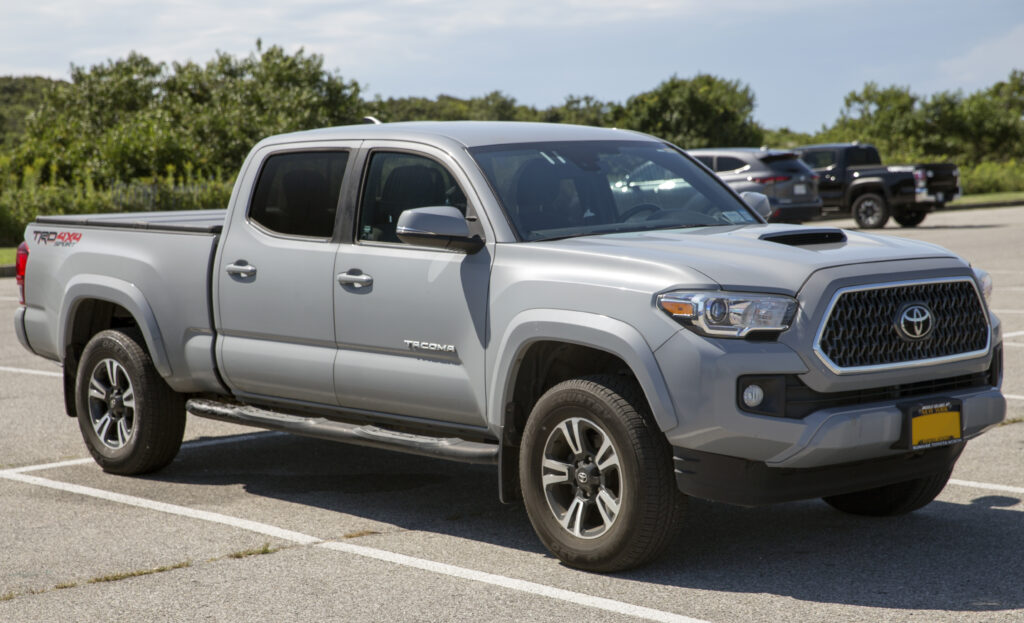
4. **Toyota Tacoma**The Toyota Tacoma, widely regarded for its reliability and off-road prowess, is another pickup model that repeatedly surfaces in reports of high insurance costs. Interestingly, its high-risk designation is not generally attributed to it being inherently unsafe. Instead, specific factors associated with its ownership and use contribute to its elevated insurance premiums.
One significant factor is its high theft rate, which makes it a persistent target for thieves and, consequently, a concern for insurers. Additionally, the common usage of the Tacoma for off-road activities introduces another layer of risk. Driving off paved roads can expose the vehicle to greater wear and tear, and potential damage, which can lead to higher repair claims.
The cost of parts and overall repair expenses for the Toyota Tacoma also play a role in its classification. When repairs are needed, the specific components and labor can be costly, influencing the insurer’s perception of risk and directly impacting the premiums. Thus, while robust and popular, the Tacoma’s profile demands higher insurance attention.
Car Model Information: 2019 Toyota Tacoma TRD Off Road
Name: Toyota Tacoma
Caption: 2020 Toyota Tacoma TRD Off-Road
Manufacturer: Toyota
Production: January 1995 – present
ModelYears: 1995–present
Class: unbulleted list
Layout: Front-engine, rear-wheel-drive layout
Predecessor: Toyota Hilux (N80)
Categories: 2000s cars, 2010s cars, 2020s cars, All-wheel-drive vehicles, All Wikipedia articles written in American English
Summary: The Toyota Tacoma is a pickup truck manufactured by Japanese automobile manufacturer Toyota since 1995. The first-generation Tacoma (model years 1995 through 2004) was classified as a compact pickup; subsequent models are classified as mid-sized pickups. The Tacoma was Motor Trend’s Truck of the Year for 2005.
As of 2015, the Tacoma was sold in the United States, Canada, Mexico, Costa Rica, Bolivia, Bermuda, and the French overseas collectivity of New Caledonia. Most markets across the world receive the Toyota Hilux in lieu of the Tacoma.
The name “Tacoma” was derived from the Coast Salish peoples’ name for Mount Rainier in the U.S. state of Washington.
Get more information about: Toyota Tacoma
Buying a high-performing used car >>>
Brand: Toyota Model: Tacoma
Price: $30,399 Mileage: 107,081 mi.
Read more about: Beyond the Hype: 13 Unbreakable Imports Engineered to Outlast Your Driving Dreams, Mile After Relentless Mile
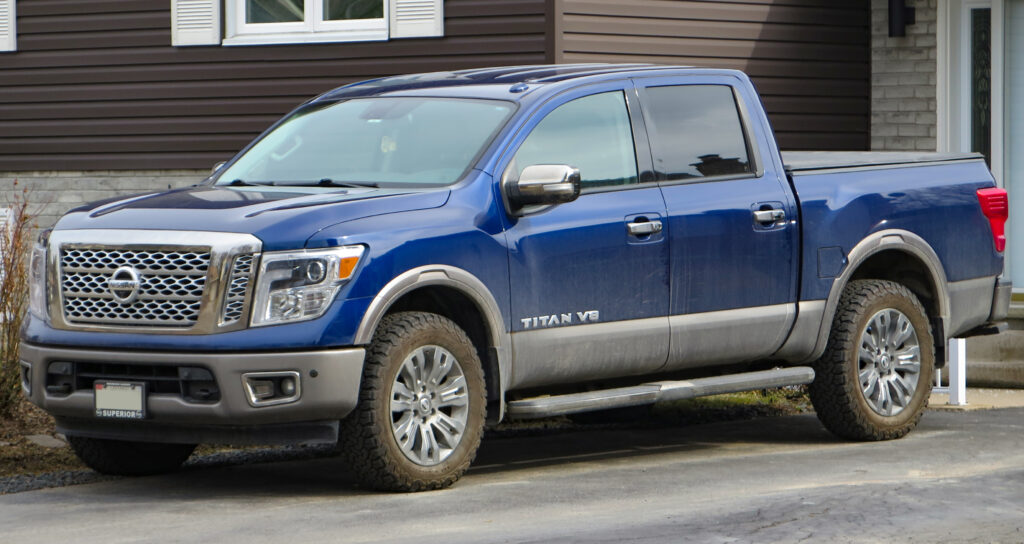
5. **Nissan Titan**The Nissan Titan is recognized as an impressive vehicle, particularly noted for its great towing capacity, which appeals to a broad segment of truck owners. However, despite its capabilities, this model is consistently cited by insurers as being expensive to repair and maintain, a factor that significantly drives up the total cost of ownership.
The primary reason for its high-risk flagging lies in the cost of its parts. Parts for the Nissan Titan are generally more expensive compared to many other vehicles in its class. This translates directly into higher claims for repairs when incidents occur, which, in turn, results in higher insurance rates for consumers who own this truck.
Insurers assess the financial exposure associated with each vehicle, and the Titan’s tendency towards costlier repairs places it in a higher risk category. This means that while owners enjoy its performance and utility, they must also factor in the potentially heftier insurance bills that come with its maintenance profile.
Car Model Information: 2018 Nissan Titan SV
Name: Nissan Titan
Manufacturer: Nissan
Production: September 2003 – November 2024
ModelYears: 2004–2024
Assembly: Canton, Mississippi
Class: Pickup_truck#Full-size_pickup_truck
BodyStyle: 2-door pickup truck,4-door pickup truck
Layout: Front-engine, rear-wheel-drive layout
Platform: Nissan F-Alpha
Caption: 2021 Nissan Titan Crew Cab PRO-4X (Canada)
Categories: 2010s cars, 2020s cars, All-wheel-drive vehicles, All articles with unsourced statements, Articles with short description
Summary: The Nissan Titan was a full-size pickup truck manufactured in the United States for the North American market by Nissan, produced for the 2004–2024 model years.
Get more information about: Nissan Titan
Buying a high-performing used car >>>
Brand: Nissan Model: Titan
Price: $21,685 Mileage: 89,835 mi.
Read more about: Beyond the Hype: 13 Unbreakable Imports Engineered to Outlast Your Driving Dreams, Mile After Relentless Mile
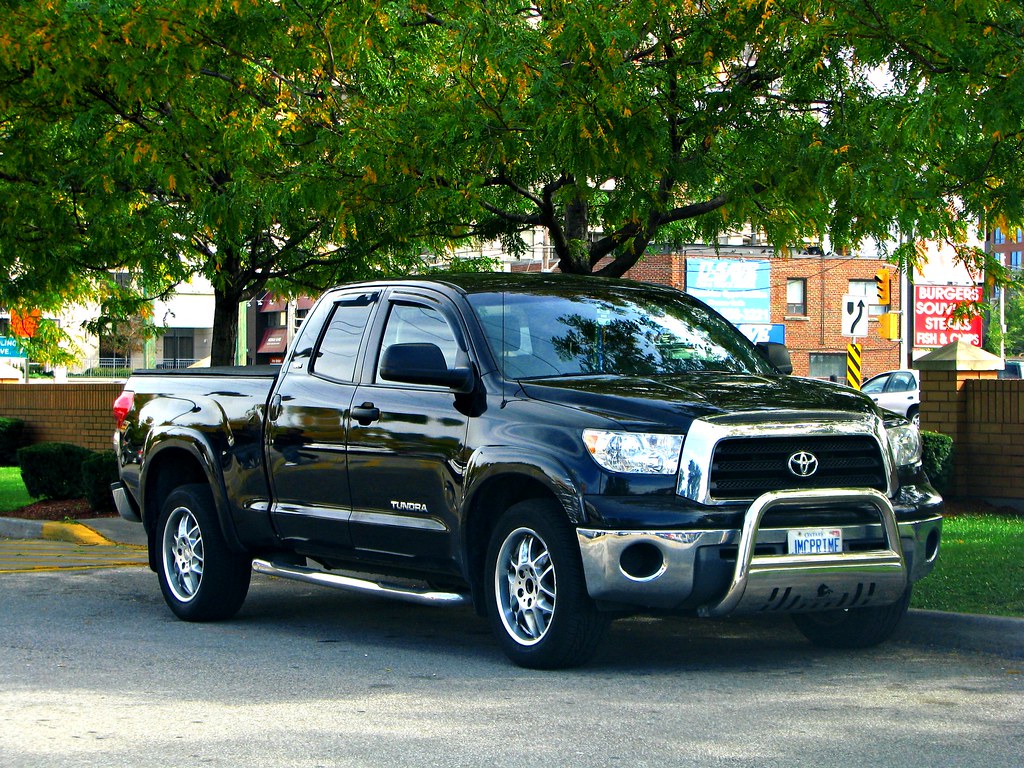
6. **Toyota Tundra**The Toyota Tundra, a full-size pickup, is another vehicle that insurance companies frequently flag as high-risk. This robust truck’s popularity, while a testament to its appeal, unfortunately contributes to a very high theft rate, making it a prominent target for criminals. Such a high demand in the illicit market significantly increases the risk for insurers.
Beyond theft, the Tundra is associated with extremely high repair costs. Its large size and complex components mean that when accidents occur, the resulting damage can be extensive and costly to rectify. This directly translates into higher payouts for claims, pushing up insurance premiums for owners.
Furthermore, the Tundra’s substantial size and powerful performance, while desirable for heavy-duty tasks, can also be a contributing factor in serious accidents. The potential for more severe collisions increases the liability risk, making insurers more cautious. The combination of high theft rates, expensive repairs, and accident potential firmly places the Toyota Tundra in the high-risk category.
Car Model Information: 2022 Toyota Tundra SR5
Name: Toyota Tundra
Manufacturer: Toyota
Production: May 1999 – present
ModelYears: 2000–present
Assembly: San Antonio,Texas
Class: Pickup truck#Full-size pickup truck
Layout: unbulleted list
Related: Toyota Sequoia
Predecessor: Toyota T100
Caption: 2022 Toyota Tundra Limited
Categories: 2000s cars, 2010s cars, 2020s cars, All-wheel-drive vehicles, All Wikipedia articles written in American English
Summary: The Toyota Tundra is a full-size pickup truck manufactured in the United States by the Japanese manufacturer Toyota since May 1999. The Tundra was the second full-size pickup to be built by a Japanese manufacturer (the first was the Toyota T100), but the Tundra was the first full-size pickup from a Japanese manufacturer to be built in North America. The Tundra was nominated for the North American Truck of the Year award and was Motor Trend magazine’s Truck of the Year in 2000 and 2008. Initially built in a new Toyota plant in Princeton, Indiana, production was consolidated in 2008 to Toyota’s San Antonio, Texas, factory.
Get more information about: Toyota Tundra
Buying a high-performing used car >>>
Brand: Toyota Model: Tundra
Price: $33,990 Mileage: 51,405 mi.
Read more about: From Street Takeovers to Uninsured Nightmares: The Wildest Automotive Hits You Won’t Believe
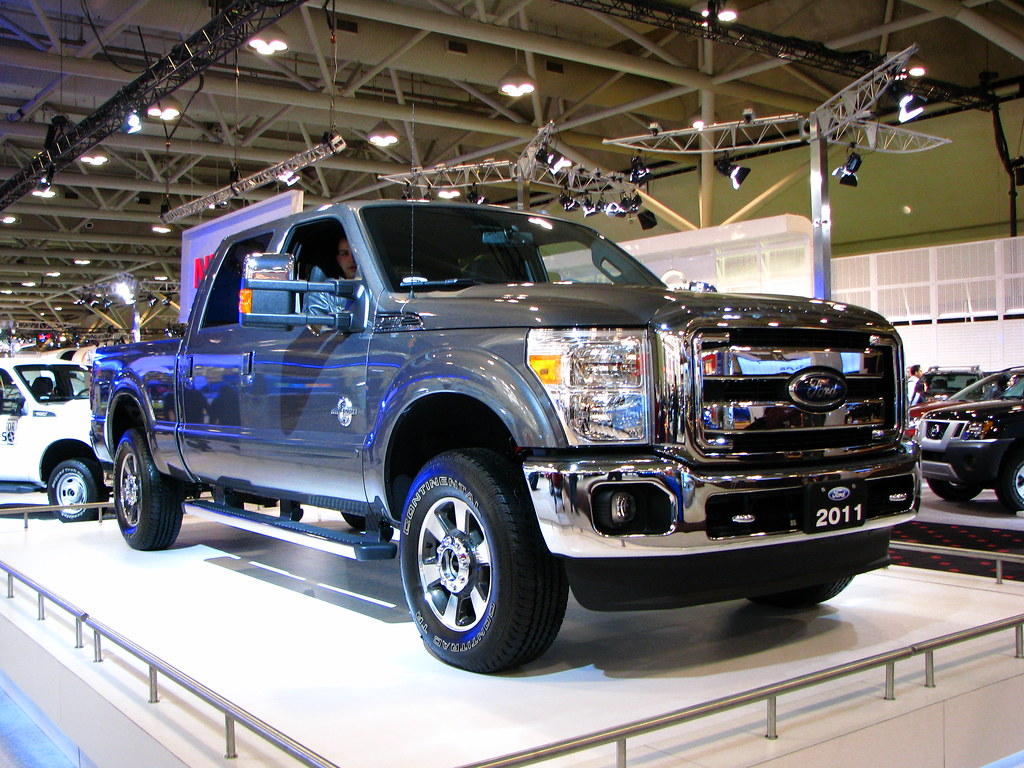
7. **Ford F-350**As the ‘Big Brother’ to the Ford F-250, the Ford F-350 is an extremely popular truck, commanding a strong presence on roads and work sites alike. However, this popularity also makes it exceptionally attractive to thieves, leading to a high theft rate that significantly elevates its risk profile in the eyes of insurance companies.
The formidable size and high performance of the Ford F-350 are also critical factors contributing to its high-risk classification. While these attributes are beneficial for heavy hauling and demanding tasks, they also mean the truck can be involved in more serious accidents. Such incidents are not only more impactful but also notoriously expensive to repair.
The costs associated with repairing damage to a vehicle of this scale, including specialized parts and labor, can be extremely high. Consequently, the blend of desirability among thieves, the potential for severe accident involvement, and the inherent high repair expenses mean that owners of a Ford F-350 should consistently anticipate receiving a heftier insurance bill.
Read more about: Jalopnik’s Ultimate Warning: 14 Trucks That Will Leave You Stranded (And Broke) On The Side Of The Road
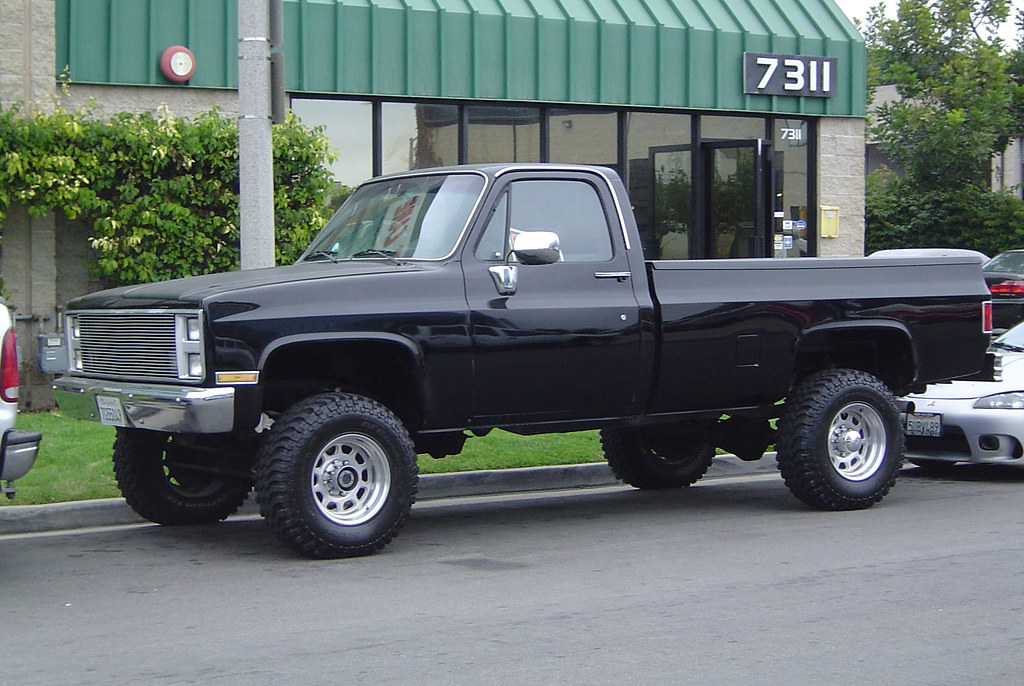
8. **The Influence of Vehicle Features and Usage Patterns**While specific models grab headlines for their high-risk flags, it’s crucial for pickup truck owners to understand that it’s not always just the make or model that drives up insurance costs. What you do with your truck and how it’s built or customized can play an equally significant role in how insurers assess your risk profile. These factors, often overlooked by owners, can quickly push premiums skyward, transforming a standard policy into a high-cost endeavor.
Consider the practical usage of your truck. If you frequently tow heavy trailers, carry substantial loads, or routinely venture off paved roads for work or recreation, this specific usage profile makes insurers inherently uneasy. Such activities expose the vehicle to greater wear and tear, increase the likelihood of damage, and can lead to more frequent or more severe claims, directly impacting the insurer’s perception of risk and, consequently, your premiums.
Furthermore, aftermarket modifications are a common red flag for insurance companies. Additions such as lifted suspension, oversized wheels, custom bumpers, or non-standard lighting gear are popular among truck enthusiasts but tend to increase repair costs or even reduce safety. Insurers view these alterations as factors that amplify the financial exposure in the event of an accident, making policies for modified trucks significantly more expensive.
Lastly, the absence of modern safety technology can also make a pickup truck a higher risk. Vehicles without features like automatic braking, lane-keep assist, or pedestrian detection often cost more to insure. These advanced driver-assistance systems are designed to prevent accidents or mitigate their severity, and trucks lacking them are perceived as having a higher potential for collisions, leading to elevated premiums.
Read more about: Why Classic Car Insurance Offers Significant Savings: 12 Key Differences from Daily Driver Policies Unveiled
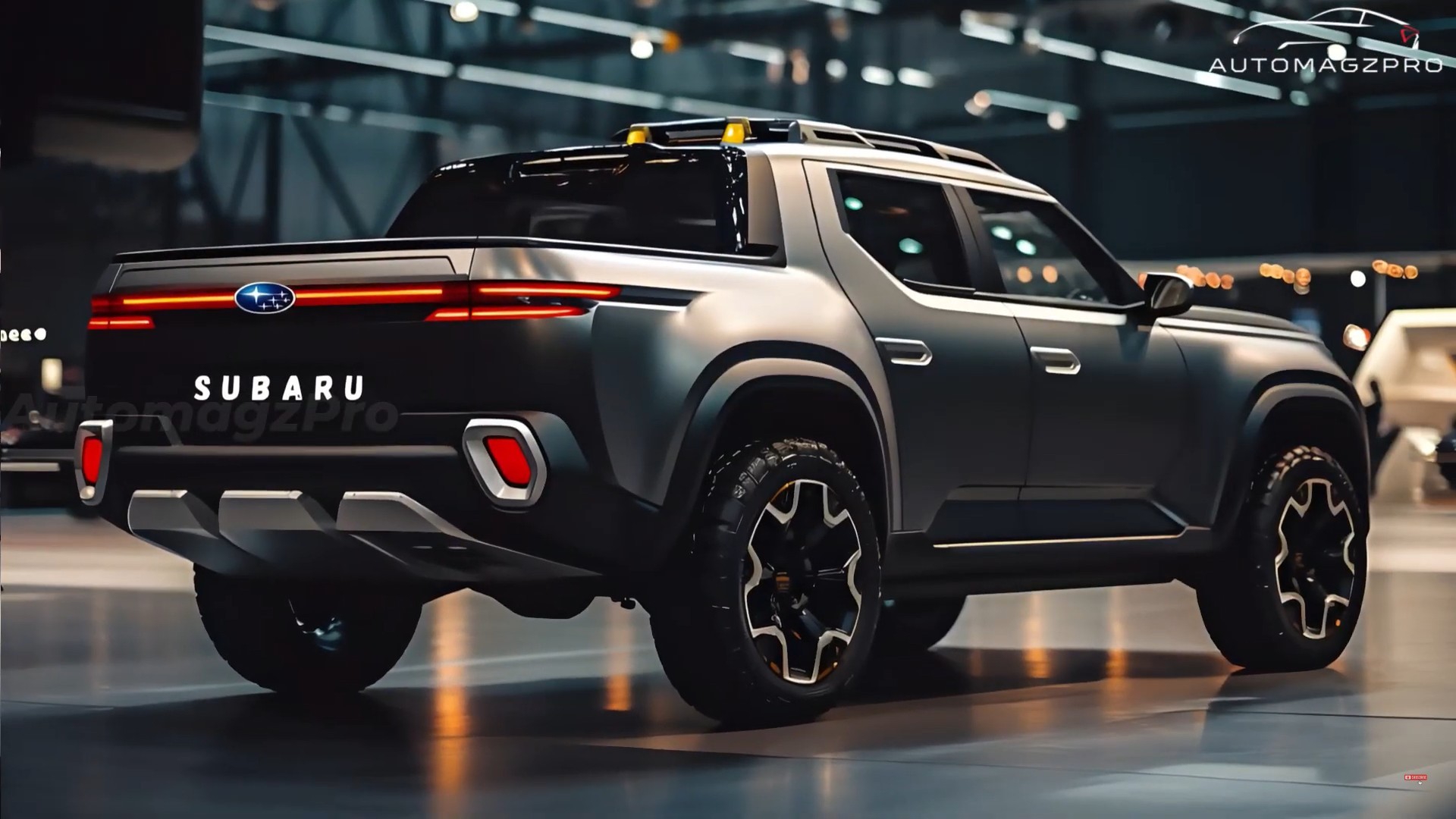
9. **How Pickup Truck Type and Age Affect Premiums**Beyond individual models and usage, the general classification of your pickup truck and its age also heavily influence insurance costs. Insurers meticulously differentiate between various types of trucks, recognizing that their inherent characteristics lead to differing levels of risk and potential claim expenses. Understanding these distinctions can help buyers make more informed decisions before purchasing.
Full-size and heavy-duty pickups, for instance, are generally more likely to be deemed high-risk compared to their midsize or compact counterparts. This is largely attributed to their substantial size, formidable power, and the associated repair costs. Their weight and brute force mean they can inflict more significant damage in collisions, thereby increasing liability risks and the overall cost of claims.
Specific heavy-duty features further contribute to higher premiums. Trucks equipped with heavy cargo beds, dual rear wheels, or diesel powertrains often come with elevated insurance costs. These components are typically more expensive to repair or replace, and they signify a vehicle designed for demanding tasks, which insurers correlate with higher potential for wear, tear, and accident involvement.
The age of a pickup truck presents a balancing act for insurers. Newer trucks, while potentially boasting advanced safety technology, tend to be more expensive to repair due to the high cost of sophisticated parts and specialized labor. Conversely, older trucks might come with lower repair costs but could lack critical modern safety features or have worn parts, which also increases their risk profile. Even the powertrain type plays a role, with electric or hybrid pickups often incurring higher costs due to specialized battery or component replacements.
Read more about: The Essential Pre-Retirement Checklist: Your Actionable Guide to a Secure and Fulfilling Retirement at 60
10. **Navigating Regional and Driver Demographic Risks**Your pickup truck’s insurance premium isn’t solely determined by the vehicle itself; a significant portion of the cost is shaped by where you live and your personal driving profile. These regional and demographic factors are powerful variables that can either mitigate or exacerbate the perceived risk, leading to considerable differences in insurance rates across various individuals and locations.
The geographical location where you operate and park your truck plays a huge role. Living in theft-prone areas, cities with high traffic density, or regions frequently hit by extreme weather events like snow, hail, or flooding will almost certainly push your insurance rates higher. Insurers analyze historical data for specific locations, down to your very ZIP code within a city, to assess the likelihood of theft, accidents, or environmental damage, directly impacting your premium.
Furthermore, the demographics of the drivers listed on the policy are a critical consideration. Younger drivers, those who commute frequently, or individuals with a history of prior claims are all categorized as higher premium risks. Insurers use actuarial data to correlate these demographic traits with a greater propensity for accidents or filing claims, necessitating higher rates to offset the increased financial exposure.
Even the regulatory environment of your state can make a difference. States with stricter vehicle safety laws or stringent emissions and inspection requirements may implicitly force owners to maintain or retrofit trucks at extra cost. These compliance demands, while beneficial for road safety and the environment, can indirectly contribute to the overall cost of vehicle ownership and, by extension, insurance.
Read more about: Navigating the High Costs: Unpacking the 13 States Where Your Car Insurance Rates Soar

11. **Proactive Steps for Buyers: Choosing Wisely**For anyone in the market for a new or used pickup truck, understanding the factors that influence insurance rates offers a powerful advantage. Making informed choices during the purchasing process can significantly mitigate future premium increases, transforming the daunting task of finding insurance into a more manageable and budget-friendly experience. Strategic selection is your first line of defense against high costs.
One of the most effective proactive steps is to prioritize trucks equipped with robust safety features. Insurers often provide attractive discounts for vehicles that include advanced driver-assistance systems such as automatic emergency braking (AEB), blind-spot warnings, lane-keep assist, and pedestrian detection. These technologies demonstrably reduce the likelihood and severity of accidents, directly lowering the risk perceived by insurance companies and translating into tangible savings for the owner.
Maintaining your truck in excellent repair and avoiding excessive aftermarket modifications are also key. While custom enhancements might seem appealing, they frequently increase both the initial cost of the vehicle and the expense of repairs, making insurers wary. Opting for proven OEM parts when replacements are necessary can further assure insurers of the vehicle’s integrity and reliability, helping to keep repair-related risk assessments in check.
By focusing on these considerations at the point of purchase, buyers can actively sculpt their truck’s insurance profile. It’s about more than just finding a truck that fits your needs; it’s about finding one that comes with a built-in advantage in the insurance market, paving the way for more favorable rates and fewer unexpected financial burdens down the line.
Read more about: Unlocking Winter Efficiency: Why Your EV’s Range Shrinks in the Cold and 11 Expert Strategies to Maximize It
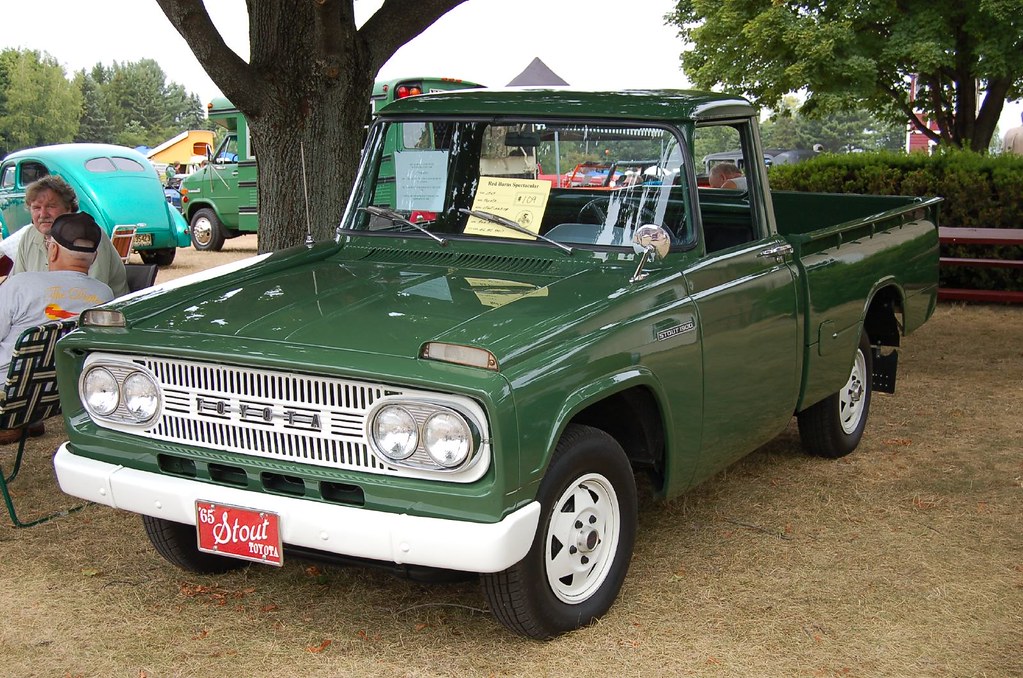
12. **Actionable Advice for Current Owners: Managing Usage and Record**Even if you already own a pickup truck that might be flagged as high-risk, there are still effective strategies you can implement to influence your insurance costs. It’s not a done deal once you drive off the lot; your ongoing choices regarding how you use your truck and your driving behavior can significantly impact your premium assessments over time. Taking control of these aspects can lead to welcome reductions in your insurance bills.
A crucial piece of advice for current owners is to limit usage for high-risk tasks if they are not absolutely necessary for your lifestyle or profession. While your truck might be capable of heavy towing or extreme off-roading, frequent engagement in such activities escalates the risk of accidents and damage, which insurers duly note. By reserving these strenuous uses for when they are genuinely required, you can present a less risky usage profile to your insurance provider.
Furthermore, maintaining a meticulously clean driving record is arguably one of the most impactful long-term strategies. This involves avoiding tickets, preventing at-fault accidents, and generally adhering to responsible driving habits. Such a history demonstrates to insurers that you are a lower risk behind the wheel, which is a powerful message when it comes to premium setting.
Over time, a consistently clean record can significantly reduce your “high-risk” label, unlocking access to better rates and potentially more comprehensive coverage options that were previously unavailable. This long-term commitment to safe driving builds trust with insurers and translates into tangible financial benefits, making your truck ownership more sustainable.
Read more about: The Hidden Costs: Unmasking the Real Reasons Your Electric Bill Exploded After Bringing Home an EV
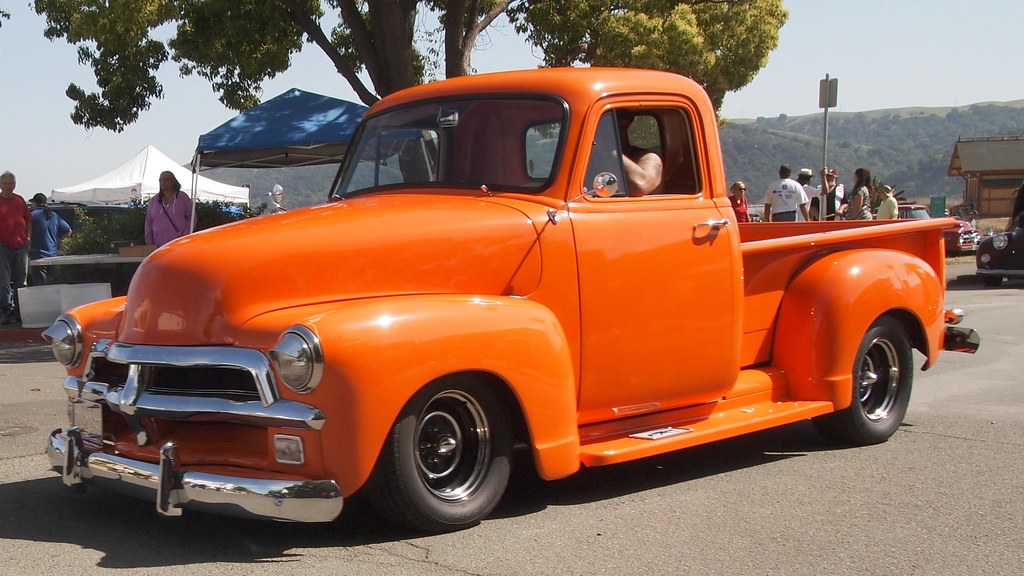
13. **The Power of Comparison Shopping for Insurance**Navigating the complexities of high-risk pickup truck insurance can feel like a labyrinth, but one of the most practical and immediately impactful strategies at your disposal is diligent comparison shopping. Far too many owners simply renew with their existing provider or accept the first quote they receive, inadvertently missing out on substantial savings and potentially better coverage options that are often available elsewhere.
It’s important to recognize that different insurance providers evaluate “pickup trucks” and their associated risks through varying lenses. Each company employs its own proprietary algorithms, extensive data sets, and unique risk assessment models. This means that a truck flagged as high-risk by one insurer might be perceived as moderately risky by another, creating a significant opportunity for the discerning consumer.
This disparity in assessment creates a fertile ground for consumers to find more favorable terms simply by looking beyond the first option. Requesting quotes from multiple companies is not merely a formality; it is a critical step in ensuring you are not overpaying. The market for pickup truck insurance is highly competitive, and insurers are often willing to offer more attractive rates to capture new business or retain existing clients.
By presenting them with competitive quotes, you gain valuable leverage for negotiation, potentially securing better rates or more comprehensive coverage for your high-risk vehicle. This proactive approach of comparing quotes empowers you to make a truly informed decision, allowing you to choose a policy that not only fits your budget but also provides robust and adequate protection for your valuable asset, without being held captive by a single insurer’s assessment.
Read more about: Unlock Incredible Savings: 14 Expert Phrases to Negotiate a Lower Price on Anything
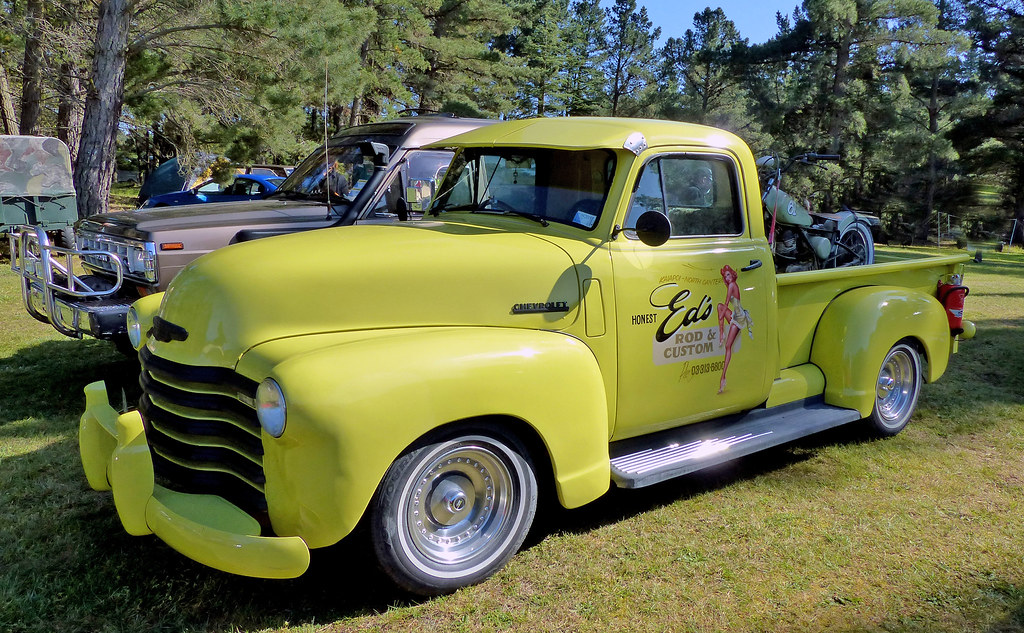
14. **Strategies for Reducing High-Risk Premiums**Beyond the initial choice of truck and ongoing driving habits, owners of high-risk pickup trucks have a suite of proactive strategies they can employ to actively reduce their insurance premiums. These aren’t just one-off decisions but ongoing commitments that can collectively make a significant dent in annual insurance costs, allowing you to enjoy your truck without constantly worrying about its impact on your finances.
One effective strategy involves enrolling in and completing safety programs. Insurers frequently offer discounts to drivers who undertake approved defensive driving courses or other safety-focused training. These programs not only refine your driving skills and make the roads safer for everyone but also demonstrate to your insurance provider a proactive commitment to risk reduction, often translating directly into premium savings.
Another powerful lever to adjust your premiums is by carefully considering your deductible and policy limits. Opting for a higher deductible will typically reduce your monthly premiums, as you are agreeing to cover a larger portion of the costs yourself in the event of a claim. However, it’s crucial to ensure you have sufficient financial resources readily available to cover that larger deductible should an incident occur, balancing savings with practical financial readiness. Choosing a lower policy limit can also help reduce your premium, though you must ensure it remains high enough to adequately cover potential losses.
Finally, embracing modern technology, specifically telematics devices, can be a game-changer. These devices record real-time driving data, such as speed, braking habits, and mileage. By voluntarily installing telematics in your truck, you can demonstrate consistently safe driving behavior, which many insurance companies are now incentivizing with discounts. This data-driven approach allows insurers to assess your individual risk more accurately, rewarding safe drivers with lower premiums, even for vehicles traditionally deemed high-risk.
Read more about: The Insurance Agent’s Essential Picks: 15 Key Insights for Affordable Car Insurance in Seattle and Washington
The landscape of pickup truck insurance, particularly for those models and usages flagged as high-risk, can seem daunting. However, it is by no means an insurmountable challenge. Armed with the right knowledge—from understanding the specific characteristics that elevate risk to proactively adopting safe driving practices, making informed purchasing decisions, and diligently comparing insurance options—owners can effectively navigate these turbulent waters. Your pickup truck can remain the symbol of freedom and utility you cherish, without demanding an exorbitant financial toll for its protection. The power to manage these costs lies firmly in your hands, ready to be exercised with smart choices and persistent effort.

